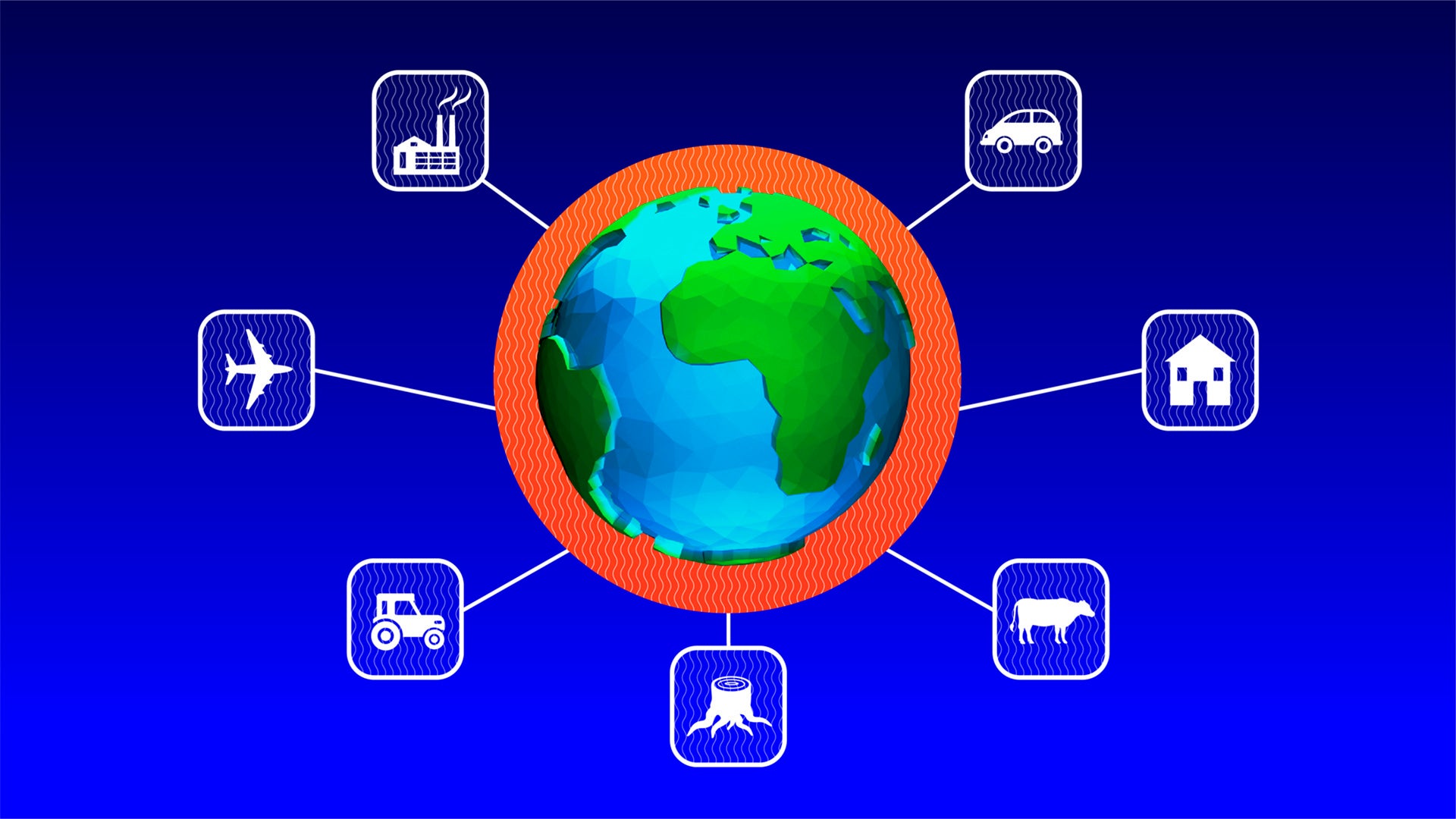Climate Questions: What are the sources of emissions?
Greenhouse gases, like carbon dioxide, methane, nitrous oxide and fluorinated gases are all hotting up the planet

Greenhouse gases, like carbon dioxide, methane, nitrous oxide and fluorinated gases, are all heating up the planet. So what are the main human activities that cause them?
The biggest share of these planet-warming gasses is spewed for energy, as coal, oil and gas still provide a lot of the world’s needs. Energy for industries like steel and iron, electricity to turn the lights on in homes and buildings, and gas to fuel up cars, ships and planes, all pump carbon dioxide into the air if they’re not coming from renewable sources.
Agricultural practices, like deforestation and livestock, make up almost a fifth of the world's emissions. Waste such as landfill, leaks from oil and gas extraction and processes like cement-making which makes carbon dioxide as a byproduct also emit greenhouse gasses.
___
EDITOR’S NOTE: This story is part of an ongoing series answering some of the most fundamental questions around climate change, the science behind it, the effects of a warming planet and how the world is addressing it.
___
Carbon dioxide accounts for over three quarters of all human-caused greenhouse gases. Methane, mostly from agriculture, coal mining and disturbing peatlands and wetlands which naturally hold in the gas, makes up about 16% of greenhouse gas in the atmosphere. Nitrous oxide from agriculture practices and fluorinated gases from refrigerants are the remainder.
Some of these gases stick around longer than others. It’s estimated that carbon dioxide can hang around in the air for 200 years or longer, so coal burned at the start of the industrial era would still be warming up the planet today. In contrast, methane, which is about 81 times more potent in the short term than carbon dioxide, lasts in the atmosphere for about a dozen years.
“Global warming is caused by accumulation of greenhouse gases over time in the atmosphere, which builds higher concentration,” said Professor Shobhakar Dhakal, one of the lead authors of a report by Intergovernmental Panel on Climate Change.
"Historical emissions, which refers to accumulated emissions over time, is important to consider,” he added.
But humans are still expelling a vast amounts of carbon into the air today. Emissions between 2010 and 2019 were higher than any previous decade in human history.
Net emissions from 1850 to 2019 were approximately 2,400 gigatons of carbon dioxide. Of these, 58% occurred between 1850 and 1989 — a 139 year period — with the remaining 42% created between 1990 and 2019 — just 29 years, according to the latest IPCC estimates. About 17% of emissions since 1850 occurred between 2010 and 2019.
Rapidly growing urban sprawls around the world are accounting for more greenhouse gases poured into the air with every passing year, the report said.
“We are still in an age of fossil fuels as a global society," said Professor Jan Christoph Minx, a lead author of the IPCC report and a climate scientist based in Germany. “We often forget that we have not managed yet to reverse the more than 250-year mega trend of global emissions growth."
Minx said that any reductions by making systems more efficient or changing the sources of energy to more sustainable ones has been less than the increases from rising global activity levels in industry, energy supply, transport, agriculture and buildings.
"The first step, is to reach peak emissions and enter an age of emissions reductions where every year we emit less and less greenhouse gases globally,” he added.
___
Follow AP’s climate and environment coverage at https://apnews.com/hub/climate-and-environment
____
Follow Sibi Arasu on Twitter at @sibi123
____
Associated Press climate and environmental coverage receives support from several private foundations. See more about AP’s climate initiative here. The AP is solely responsible for all content.